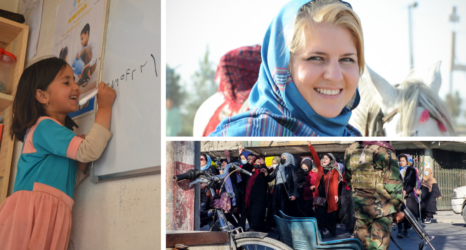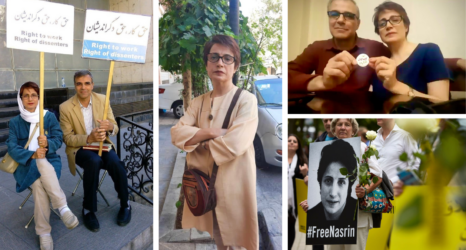If 2020 has accomplished anything, it has highlighted the many injustices that Black Americans face. As COVID-19 rages on, Black Lives Matter protests sparked by the death of George Floyd and other Black victims of police brutality shake the streets.
Important to this discussion is COVID-19’s disproportionate impact on African Americans—from their overrepresentation in the essential workforce, to a coronavirus mortality rate 2.2 times the rate for Latinos and 2.3 times the rate for Asians and whites.
Though many factors contribute to the one-two punch of racism and a global pandemic affecting Black Americans more than any other population, one major problem is the overrepresentation of Black people in jails, prisons and detention centers. In some U.S. counties, the portion of Black people behind bars is at least 10 times larger than the portion of the surrounding county that is Black.
It is impossible to socially distance while incarcerated. As a result, COVID-19 runs rampant in the U.S. corrections system.
In this historic moment, the work of justice architect Deanna Van Buren is more critical and necessary than ever.
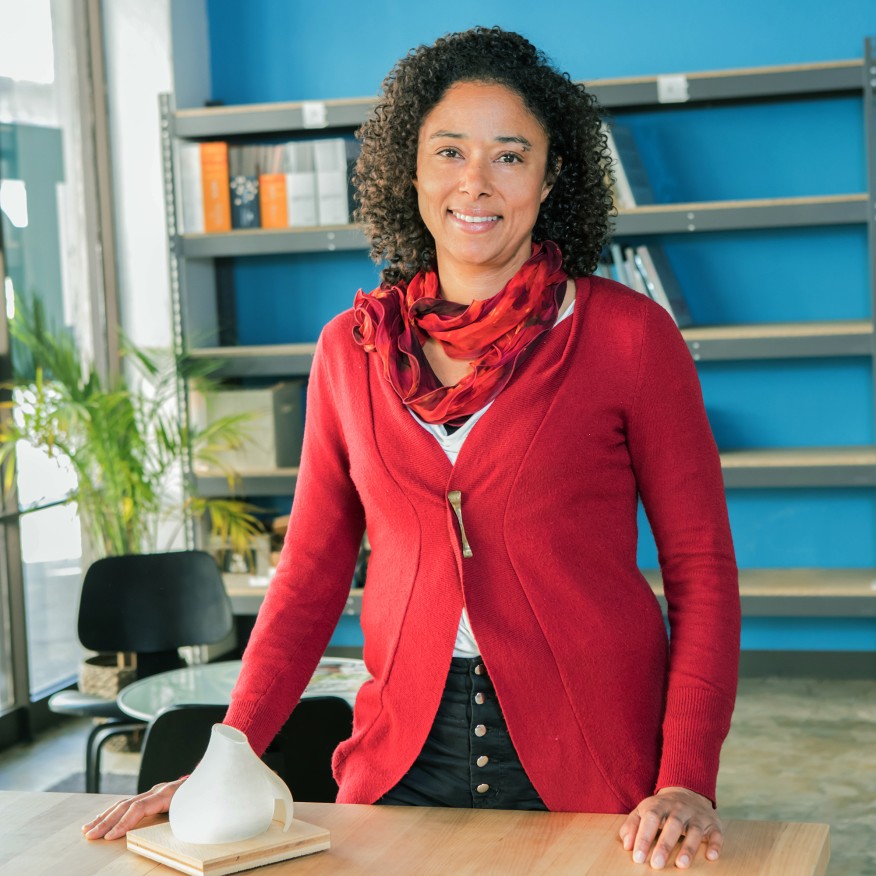
Van Buren is co-founder, executive director and design director of Designing Justice + Designing Spaces, an Oakland-based architecture and real estate development nonprofit working to end mass incarceration by building infrastructure that redefines the entire criminal justice pipeline.
Ms. writer Violet Rawlings and Van Buren recently engaged in conversation centered around Van Buren’s vision for a world without prisons.
Editor’s Note: The conversation has been lightly edited for length and clarity.
Violet Rawlings: Tell us about your work.
Deanna Van Buren: Well, I’m an architect and I’ve been an architect for a very long time. My work as an architect is focused on designing for Black and brown people and focused on ending a system that has oppressed Black and brown people for a very very very long time. And that is the system of mass incarceration and policing, and the entire justice system itself as we know it in this country … and exploring what the role of the architect-designer within the context of that is.
That’s what I do every day with Designing Justice + Designing Spaces, which we’ve been doing for about five or six years now.
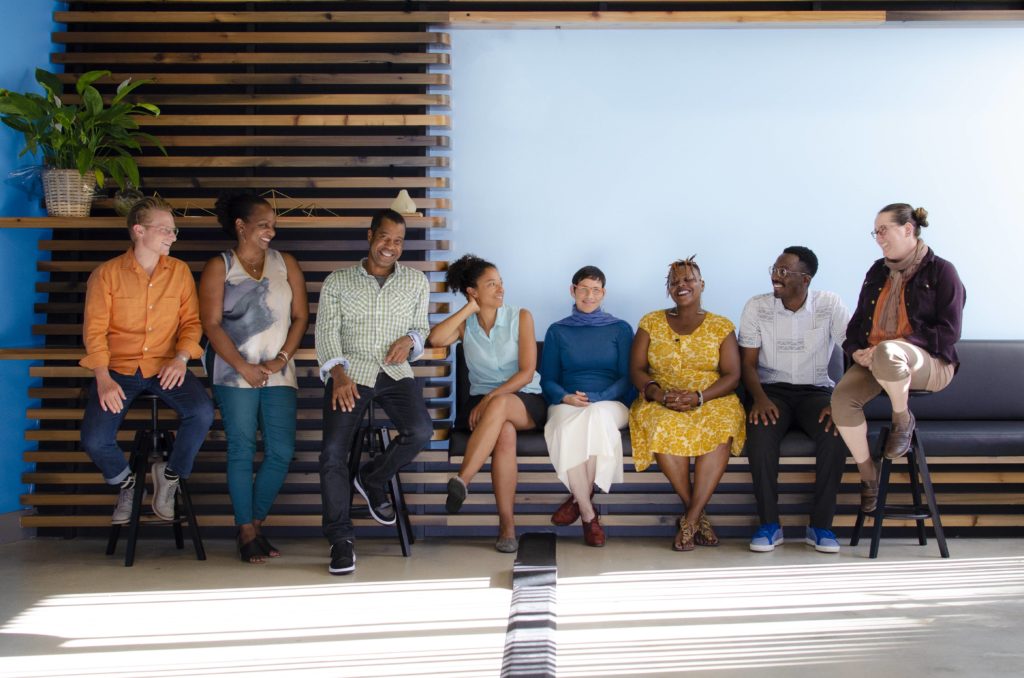
VR: How does restorative justice fit in with your vision for Designing Justice + Designing Spaces?
DVB: Restorative justice was really the spark that ignited my desire to leave the corporate world and go out and work with a missions driven organization. I heard about restorative justice from Angela Davis and her sister, Fania Davis, back in 2007. I learned that there’s this other justice system that existed long before the one we have now, where the survivors of any violence or harm were at the focus of it … that there was a way of bringing justice where those who committed the harm were accountable and could actually make amends.
A justice system existed around the repair and restoration of those who had survived the violence … that those parties could come together and talk about what happened and create a plan for the person who did the harm to address it.
This is such a different way of thinking about justice. And when I learned and started to understand how it was happening around the world, I was like, well, that is something I could design for. There’s an entire infrastructure for criminal justice; we could create an entire infrastructure for restorative justice.
That’s how I got started with my own practice back in 2011. And now it’s a part of our work at Designing Justice + Designing Spaces: We design spaces for peacemaking, pouring restorative justice into our projects.
But the types of work we’ve done have expanded way beyond that. We thought, we could do restorative justice—but that’s not the only thing we need to do! There’s a lot, a lot, a lot of things—so we need to build in order to end mass incarceration.
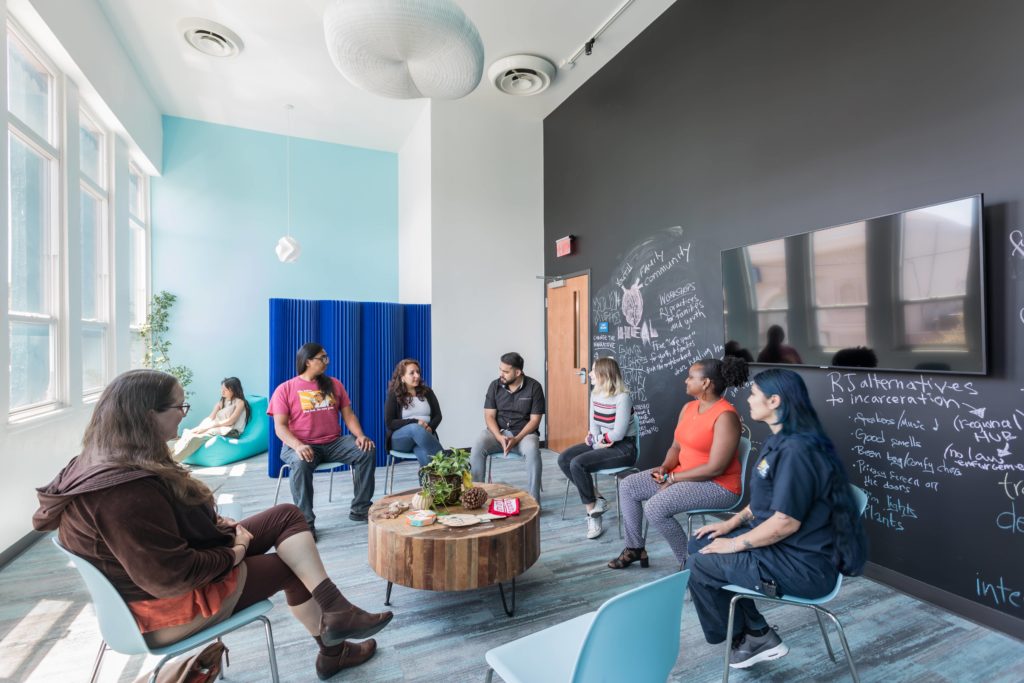
VR: Instead of simply theorizing how alternatives to prisons might look, you are out in communities actualizing these prison alternatives. What do these healing spaces you build look like? What are some key features and why?
DVB: We practice in a very specific way, where we go into communities and develop tools and games and workshops where they are deeply engaged in the thinking through and design of these spaces. These are environments that had not existed before; these are also environments that are attached to cultural practices and uses that people may or may not have engaged in.
What do you need and what are things that can happen here that would support your lives?
You have to engage people in that, and you have to do it in a way that’s intentional and deeply integrated.
Our engagement means they understand what goes into building a building; what goes into making a place, everything from the financing to the design. From there, we’re able to get lots of creative ideas from the community on what these spaces should look like and be like. We take that data, we code and analyze it and we come back with design concepts.
And so in the case of a place like the Syracuse Peacemaking Center, for example. We learned that spaces for peacemaking actually need a more domestic feeling. People don’t want to come into a sterile environment and feel like everyone is staring at them. This needs to be activated with art, objects, things to touch, things to see, textures. There needs to be a greeter, someone to welcome you. There needs to be food, meaning you have to have a kitchen. Almost all of our projects have a food anchor; breaking bread together is part of justice too.
We know justice when we come together as a community. Evidence-based design and other types of building often tell us that our environments need to be integrated with nature—whether that be daylight, art that represents nature, gardens, et cetera. We try to build as much of that into our projects as possible and try to use aspects of biophilic design.
We have a permaculture designer on the team, so we’re looking at the systems of nature as ways of stacking functions and integrating them into the project. Everything from the lighting we choose … things can be very simple, they should be calm but they should also be dynamic.
And how do you that balance in these environments? Specifically, I’m speaking to peacemaking spaces and restorative justice spaces. People need to feel safe and contained. So there’s a privacy level—but they also need to be able to have views out and see ways of leaving an intense conversation … everything from cool-off spaces to translucent surfaces. You have to think through all the furniture; you have to think through every wall surface that can support these kinds of processes.
And these kinds of spaces need to be integrated with other kinds of spaces. What does it mean to have environments for conflict resolution alongside a restaurant? Or alongside a community organizing facility? Or alongside a grocery store? What does that look like?
And so we have to start to pull these different things together and co-locate them into a single hub that provides people with the resources that they need, which are multifaceted. You don’t just need to go eat; you might need to be with a caseworker, or have daycare for your children. There’s a lot of things that we need to support our lives and they need to be made very easy for people to get access to.
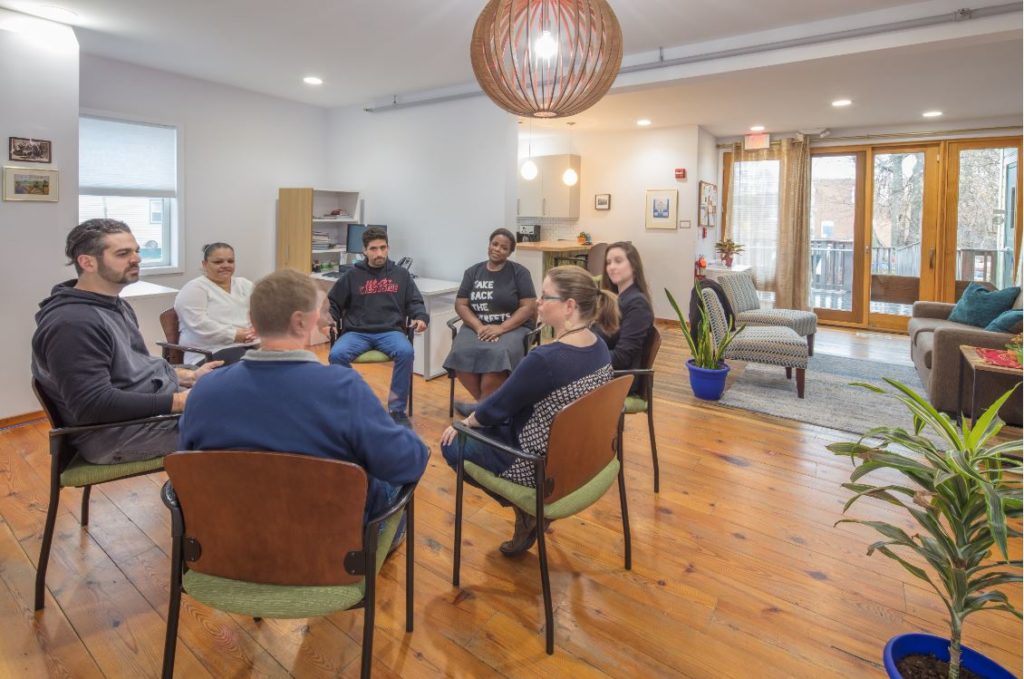
VR: I think Ms. readers would be interested in hearing about the mobile women’s refuge you designed in San Francisco. Could you talk a bit about that project and how it has evolved?
DVB: I’d love to talk about it, and I wish that it was being more used. This was a project that we worked on with Five Keys Schools and Programs many years ago when we learned that women were getting released from jail in the middle of the night and getting killed. Just straight up killed. Folks know these are often drug dealers, men engaged in sex trafficking that are there waiting for them. This was meant to be a refuge.
And I think it will still be used that way and we’ve also been working with groups who want to use it for survivors of sex trafficking. Oakland has a huge sex trafficking issue which is actually spiking right now. These are young girls out on the tracks—literally.
I think this is where you sometimes kind of break down and are like, okay, infrastructure is there—but you need to have an operator and a program provider to activate it. So it’s there, it can be used by anybody. We did the thing, we paid for it, we fundraised for it, we built it. Now we’re even trying to make connections to program providers—something we end up doing a lot of as architects. Like, hey, program provider or sheriff’s department or probation department, we have a piece of infrastructure that we think you could use; why don’t you come out and look at it?
And they’re always like, Oh yeah, woo woo! And then you’ve got to take the next step where you have to get a budget for it, right? So because of the way our systems work, if I’m a sheriff’s department or I’m a nonprofit, my budget’s set. When something new comes along, they then have to find a way to allocate and organize the funding. What we’re seeing now during COVID is that money’s starting to move faster, which is good. It can also be bad if you don’t have a plan for it.
But that project is one that can serve a lot of different groups. They’d have to work together and get along, but this mobile piece of infrastructure is really valuable.
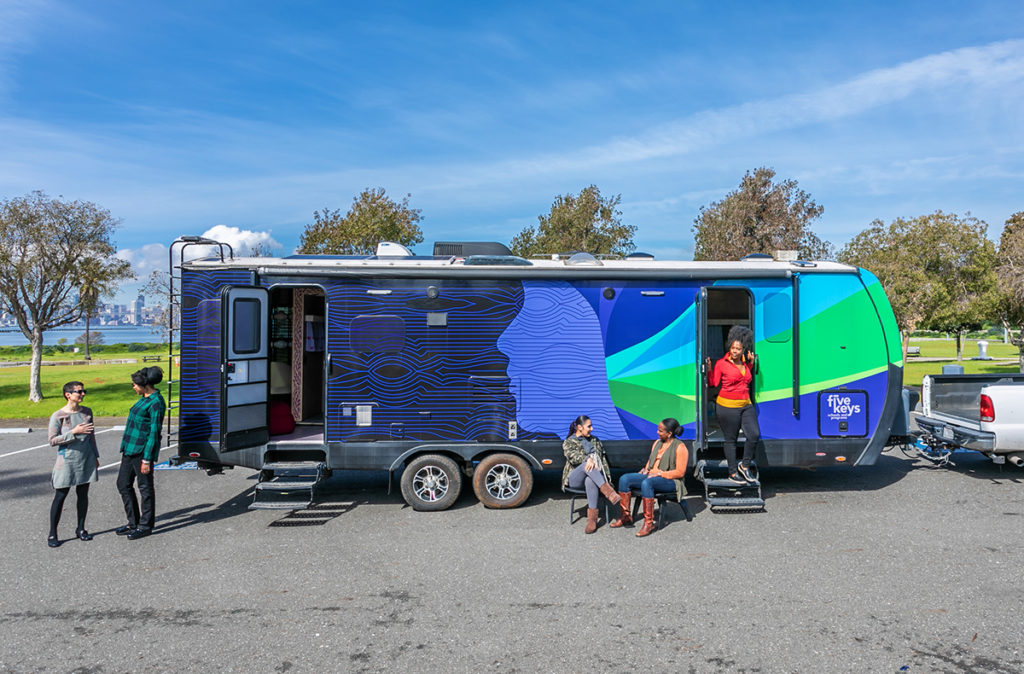
VR: Wow. It’s so upsetting that you’ve built this infrastructure and the hardest part now is getting someone to use it. That’s mind-blowing.
DVB: Isn’t it? It’s sitting there, it’s gorgeous, it’s ready. Go get it out there!
Get somebody in a truck … we even have a truck! You can take the truck, drive it out there. But you’ve got to staff it, you’ve got to have somebody on it, you know. That’s why we try to only do projects when we have a program provider who is deeply engaged. Finding folks who are really committed to your project and to really follow-through is important.
Right now it is being used in our Pop-Up Village. It anchors the Pop-Up Village and folks can come there and get acupuncture, massage … so it’s sort of this health and wellness place for folks.
And we’re about to do a new project called the Pop-Up Pregnancy Village. The vehicle will be used to support pregnant women in low-income communities of color in our area, to be able to get access to a care provider because Black women often suffer from preterm birth … they don’t access medical facilities because they don’t feel safe. And so the vehicle will be now used for that as well. We’re finding the program providers. They’re coming!
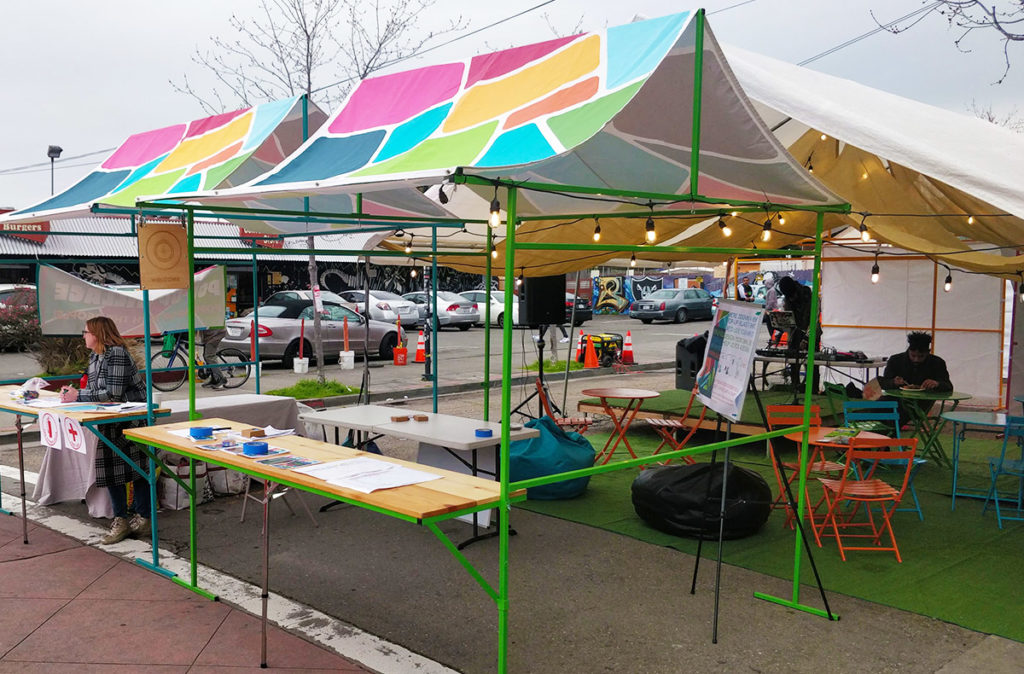
VR: It seems to me that where our police and law enforcement communities are failing, your company steps in.
DVB: I think that the systems really failing us are economic systems. Our government and the social structures we have are not investing in communities of color; they’re investing in criminal justice. And of course our military-industrial complex—but we won’t even go there! That’s where the money’s going. The money’s not flowing into communities.
People don’t commit crimes when they have jobs. And family support. And community support. And education. And access to food. But when you take it all away and you abuse people, what’s going to happen? And you have a racist system, so that’s also being projected on folks. I think for the development of communities of color, at least the best that we can do as architects and developers is just keep fighting the fight.
To be like, look, the money has to go here. You have to pay for places, you can’t just pay for programming. You can’t just give handouts to people, you have to build out. People need homes that they own, people need buildings and businesses that they own. And that has been systemically eroded for centuries in the United States. The redlining, the racist violence, the attacks on communities of color.
There are larger planning structures that have to change. With the predatory lending that happened back in 2006-2007 that gutted Black American wealth and homes … we keep gutting and taking what they have. And so we’re really trying to bring capital back into communities of color and to help develop. We don’t do housing, we’re not doing individual homes. We do some types of housing that are specifically related to mass incarceration and ending it—but our primary thing is saying okay, we can build a community out in a way that they can own it and they can be sustainable for the long run. Not get displaced, not get gentrified. Asking, what has to get done to reduce policing in this community?
And it’s a heavy lift. I’m not saying this is easy, and I’m not saying we’ve succeeded yet. This is a long game, like after-I’m-dead kind of long game. But the built environment really matters and it’s been kept out of our thinking a lot so we’re really really pushing that as being critical critical critical both to ending mass incarceration and reinvesting.
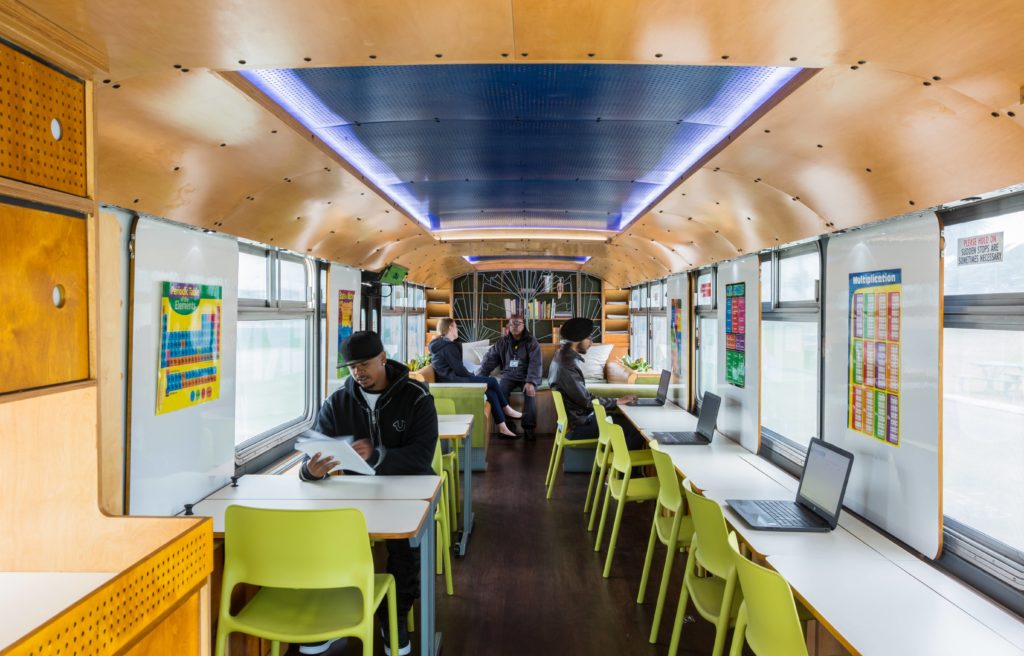
VR: You mentioned housing. What type of housing are you working on?
DVB: Right now what we’re trying to develop is housing for youth transitioning out of foster care. When young people get out of foster care, often what happens is they end up homeless… incarcerated. If you go to places like Quentin Prison you’ll find that almost 80% of the people there have had some contact with the foster care system. So you can’t not look at the foster care system if you want to end mass incarceration. This is why we have to look across systems if we really want to stop this thing.
So that is one of the models, the other housing model that we are looking at is reentry housing for folks coming out of jail. So those are the primary housing modalities. And more may come, I mean I think we’re looking now at supporting LA County and implementing their Alternatives to Incarceration Plan. This is very groundbreaking and I don’t know why more people aren’t talking about it. Instead of building a $3.5 billion jail infrastructure — a mental health jail — community organizers were able to get the county to stop the bonding measure and to look at the entire network of infrastructure that would be a system of care.
We need housing that’s more permanent and transitional supportive housing for everything from drug and alcohol addiction to those who are struggling with mental health issues. So there’s a lot of housing types that we need but just we don’t have enough of.
VR: Has COVID affected your work building housing and spaces of shelter?
DVB: I think COVID has affected our work in that it’s ramped it up. Everything we were doing before now has to be on steroids. For example, we are developing these mobile refuge rooms … mobile pop up rooms for formally incarcerated men and women in transitional housing so they have some privacy and dignity. We’ve been working on that for over a year. Our county had bought some, but now with COVID, there are more people getting released, people need to be quarantined, they need to be socially distanced and monitored. And these units are perfect for that. And now we’re trying to figure out how to make hundreds of them.
More people are calling saying we want to close our jail. It’s amazing to have been doing something for so long and then in the matter of weeks and months have the entire system all of a sudden be like oh yeah you’re right, we have to do that now. And so I’m glad we had started it, but this stuff takes a long time.
I wrote an article last year, called “We Must Plan for a Decarceration Nation,” and I think we’re seeing now what not planning for it has done. We don’t have what we need to support that, and yet it’s absolutely necessary and absolutely possible. So, we’ll get there but we have to quickly expand to meet the demand right now.
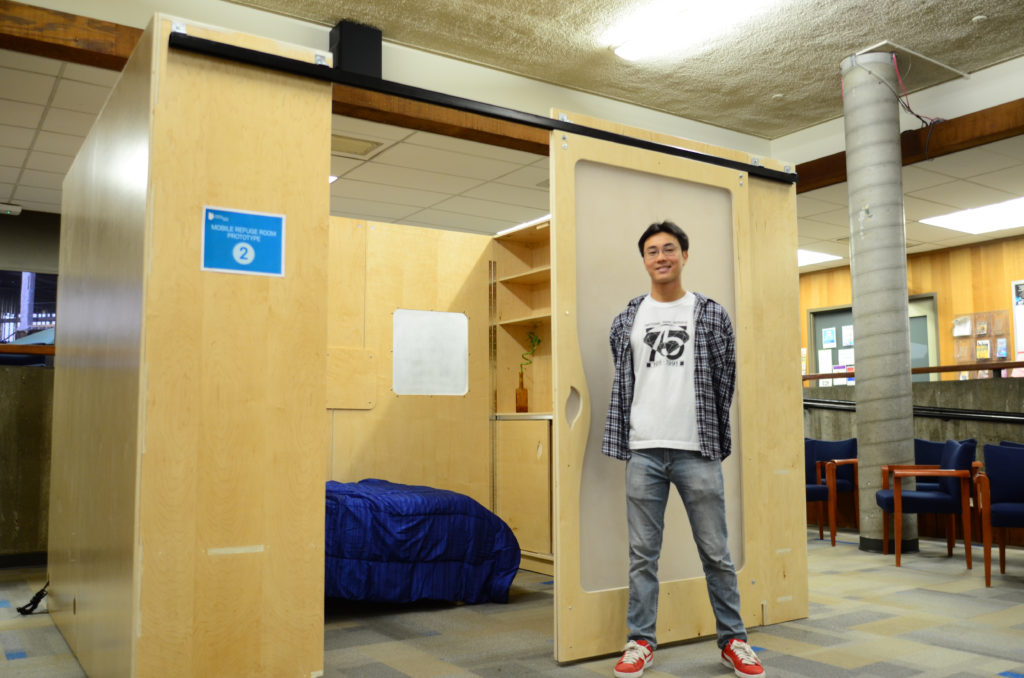
VR: The demand from people released from jail due to COVID outbreaks?
DVB: Thousands and thousands, tens of thousands of people are being released from jail. Some can go home. Some would have gone into some form of transitional housing. Sometimes unhoused people can try to get into hotels, but that’s not always the case. And you don’t know if they’ve been tested or not, so a lot of places won’t let people in.
Reentry housing is trying to manage it. Homeless shelters don’t feel safe for homeless folks; they don’t want to be there either. And so people are getting pushed into things … a lot of people are ending up in encampments or homeless. So it’s a sort of vicious cycle of insecure housing that people move through if they don’t have a home to go to.
Now that they’re letting folks out of jails and prisons for their own safety and there’s no infrastructure for it, it’s a struggle to find beds. It was always a bit of a struggle anyway, and now it’s just worse.
VR: In your Ted Talk, you reveal that what it costs to build one jail builds thirty restorative justice centers. As a nonprofit, how does DJ+DS mainly fund projects?
DVB: Right now, we are very interested in land rights and land reparations so we are working with mostly nonprofits to buy their buildings and develop their buildings in community. That requires a very complex capital stack. A capital stack is all the sources of funding that will go into building your project. One of our projects can easily cost $10 million, or like our project in Atlanta—the Atlanta City Detention Center remodeling—over $100 million. So these are very expensive projects and it depends on who owns the project and what the structure is. But for example, with a project like Restore Oakland, we had federal tax dollars … market tax credits helped support that, as well as philanthropy.
But yes, you have to take out debts, you have to invoke both debt and equity in the project. That’s why we have financial experts and developers in house … because we have to figure all that out. And most architects are just architects, they don’t have this other aspect within their organization. But when you’re going to help communities build new things—when you’re going to create environments or places that haven’t existed before—you really do have to be figuring that part out.
As an organization up to date, we’ve been largely funded by philanthropy, which is great because philanthropy can and should be risk capital, as I like to call it. They are the ones who should be taking risks with their money and supporting innovation, as they do with us. We don’t have time to follow the governmental structures; we have to make new things.
They can support the acquisition of sites as well. It’s hard for low-income communities of color to develop their own land and property because they often have no access to capital and don’t know how to do it. Our job at DJ+DS is to really support more people doing this, including ourselves.
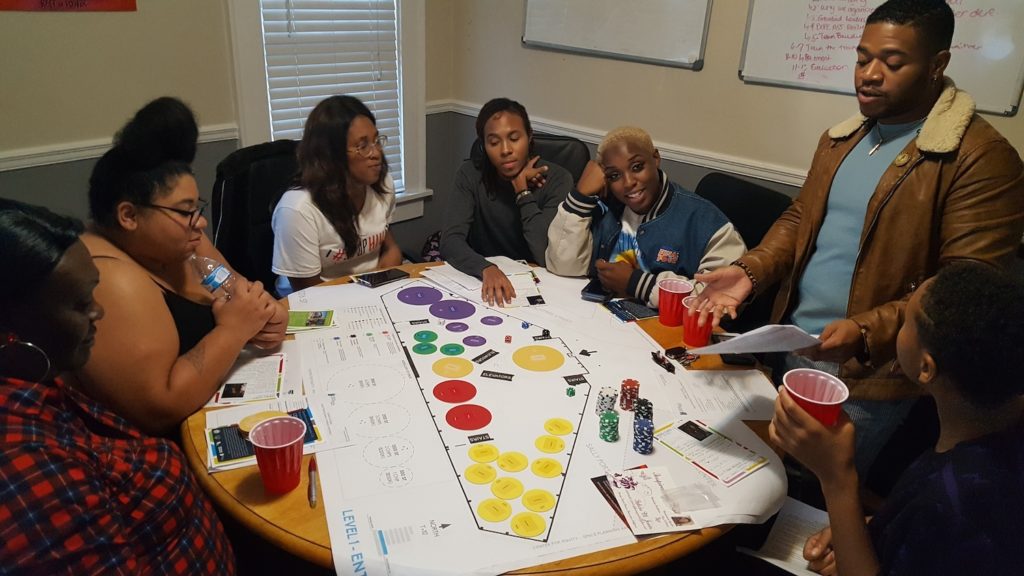
VR: Your work seeks to address the root causes of mass incarceration. What would you say has been the biggest challenge you’ve encountered as you take on the prison industrial complex?
DVB: Well there are many, many challenges and the challenges keep coming. I feel like we are at a moment when the challenges might become less. Racism is a challenge; it’s a challenge at every level. I think people are waking up to that, which is going to help a lot. We try to avoid working with people who are not open to the ideas. We look for the innovators inside and outside the system and we partner well in order to overcome—I would say—the deep ignorance and lack of imagination that we come up against.
Sometimes the biggest challenge is just the way people think in their minds, what they believe is true and what they believe is possible … which tends to be very limited. You’ve got to break people out of that thinking. This is both a challenge and something I think we’ve been successful at.




